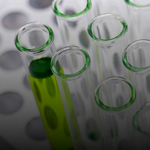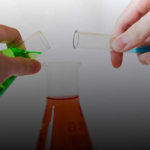Section 1
Preview this deck
antibodies in blood
Front
Active users
0
All-time users
0
Favorites
0
Last updated
6 years ago
Date created
Mar 1, 2020
Cards (79)
Section 1
(50 cards)
antibodies in blood
Passive immunity= When are HIV antibodies detectable in blood?
heart function
*pumps blood throughout the body *Blood goes into right atrium from superior vena cava through tricuspid to right ventricle to the pulmonary valve to the pulmonary artery to lungs to pulmonary veins to bicuspid to left atrium to mitral valve to left ventricle to aortic valve to aorta
White Blood Count
What is a marker for an infectious disease? Status of immune system and ability to fight off infection
heart structure
4 chambers: 2 atria (right and left) and 2 ventricles (right and left)
chyme
mixture of enzymes and partially-digested food
colon
The large intestine the largest section of the vertebrate large intestine; functions in water absorption and formation of feces; first, coiled part of large intestine
lower respiratory
consists of the bronchial tree and lungs
antigens
*Foreign material that invades the body *Anything that is foreign to the body and that causes an immune response *What mobilizes the adaptive defenses and provokes an immune response?
Platelet function
They play a key role in retention of blood loss by forming a * plug at the site of tears when connective tissue is exposed. Serotonin is released and smooth muscles contract in the vessel walls. *Blood clotting - Cause capillary homeostasis by adhering to the inner surface of a vessel and sticking to each other to create a temp. mechanical plu
saliva
softens food in the mouth making it easier to swallow; helps break down food into simpler forms; secreted by glands in the mouth
basophils
*When performing a WBC differential, which cell has the large, scattered dark blue granules that are darker than the nucleus? *A circulating leukocyte that produces histamine.
gastric juices
Secretions from the stomach lining that contain hydrochloric acid and pepsin, an enzyme that digests protein.
digestive process
*The process by which the body breaks down foods and either absorbs or excretes them. *Ingestion➡digestion➡absorption➡egestion *Mechanical digestion, denaturation of proteins (by acidity), chemical digestion of proteins (by pepsin), intrinsic factor, delivers chyme to small intestine
blood flow thru heart
Blood enters from superior and inferior vena cava, right atrium, tricuspid valve, right ventricle, pulmonary semilunar valve, pulmonary trunk, pulmonary arteries, lungs, pulmonary veins, left atrium, mitral valve, left ventricle, aortic semilunar valve, aorta, rest of body
blood vessels
Veins Arteries
systolic
Blood pressure in the arteries during contraction of the ventricles. Contraction of the heart
blood pressure
Reflects the force the blood exerts against the walls of the arteries during contraction (systole) and relaxation (diastole) of the heart.
antibodies
An antigen-binding immunoglobulin, produced by B cells, that functions as the effector in an immune response. Specialized proteins that aid in destroying infectious agents
GI tract
stomach, colon. intestines, anus rectum *Oral cavity, pharynx, esophagus, stomach, small intestine, large intestine, rectum & anal canal *mouth -> esophagus -> LES -> stomach -> pyloric sphincter -> SI -> ileocecal sphincter -> LI -> rectum -> anus -> anal sphincter
blood type
*a classification of blood that depends on the type of antigen present on the surface of the red blood cell; A, B, AB, or O *A, B, AB and O. Type O is the universal donor and AB blood is known as the universal recipient.
digestive system
*Breaks down food into absorbable units that enter the blood for distribution to body cells. *Composed of the alimentary canal and accessory structures. Mouth, esophagus, stomach, small intestine (duodenum, jejunum, and ileum), large intestine (colon), and anus, Breaks down food into absorbable units that enter the blood for distribution to body cells. *The system of organs and structures responsible for the digestion of food. The digestive system includes teeth, mouth, esophagus, stomach, small, intestine, large intestine, and colon.
red blood cells
Carry oxygen Blood cells that carry oxygen from the lungs to the body cells.
heart valves
structures within the heart that open and close with the heartbeat to regulate the one-way flow of blood
plasma
Liquid portion of blood
cardiac cycle
A complete heartbeat consisting of contraction and relaxation of both atria and both ventricles the complete cycle of events in the heart from the beginning of one heart beat to the beginning of the next
respiratory system
A system of organs, functioning in the process of gas exchange between the body and the environment, consisting especially of the nose, nasal passages, nasopharynx, larynx, trachea, bronchi, and lungs.
eosinophils
*What IgE-mediated cell secretes major basic protein and has elevated levels in the blood during asthma and parasitic infections? *What type of WBC is present in increased numbers during an allergic reaction?
motility
The capability of the GI tract to move material along its length is called The ability of an organism to move by itself
small intestine structure
The thinner of the two intestine but is much longer. Is highly folded, highly vascular so it can absorb nutrients into the blood - The small intestine has three main structures— the lining, villi, and microvilli—that absorb most of the nutrients from chyme
pancreas secretion
Secretes pancreatic juice to break down carbs, fats, and proteins Secrete pancreatic juices into the cavity and insulin, and glucagon into blood to regulate blood sugar Secretin - It is secreted from intestinal cells when acidic food from stomach enters small intestine. Secretin promotes secretion of bicarbonates and water from pancreas.
cardiac conduction
a system of specialized muscle tissues that conducts electrical impulses that stimulate the heart to beat
RBC
red blood cell Erythrocytes 4.5-5 million
pancreas function
regulates blood sugar (insulin & glucagon) Secretes pancreatic juice which breaks down all categories of food produces digestive enzymes for fats, carbs, and proteins
neutrophils
Most abundant white blood cell., The most abundant type of white blood cell. Phagocytic and tend to self-destruct as they destroy foreign invaders, limiting their life span to a few days.- WBC
hemoglobin function
*transports oxygen and carbon dioxide *carry oxygen and also CO2 back to the lungs *transport oxygen from the lungs to the tissues and carbon dioxide from the tissues to the lungs
Red blood cells regulated
1. Oxygen deficiency stimulates Erythropoietin (EPO) production by kidneys
function of the blood
Transportation materials to and from cells Transports nutrients, carries O2, waste products, hormones to their target cells, regulates body temperature, protects against bacteria and viruses
pericardium
Double-layered membrane surrounding the heart.
blood cells made
blood cells and bone marrow
bile function
digest fat; excrete waste
lymphocytes
The two types of white blood cells that are part of the body's immune system: B lymphocytes form in the bone marrow and release antibodies that fight bacterial infections; T lymphocytes form in the thymus and other lymphatic tissue and attack cancer cells, viruses, and foreign substances.
blood components
Plasma, red blood cells, white blood cells, and platelets 55% Plasma, 45%-Formed Elements
Platelet function in hemostasis
- Cause capillary homeostasis by adhering to the inner surface of a vessel and sticking to each other to create a temp. mechanical plug
monocytes
*A type of white blood cell that transforms into macrophages, extends pseudopods, and engulfs huge numbers of microbes over a long period of time *An agranular leukocyte that is able to migrate into tissues and transform into a macrophage.
White blood count
*Neutrophils, lymphocytes, monocytes, eosinophils, basophils *tests to see what percentage of total white blood cell count is composed of each of the five types of leukocytes
blood flow thru blood vessels
tissue perfusion
diastolic
occurs when the ventricles are relaxed; the lowest pressure against the walls of an artery
heart layers
Endocardium ( inner), myocardium ( middle), and epicardium ( outer)
upper respiratory
consists of the nose, mouth, pharynx, epiglottis, larynx, and trachea
antigens in blood
Def A,B in blood macromolecules are foriegn to host organism and trigger an immune response
Section 2
(29 cards)



